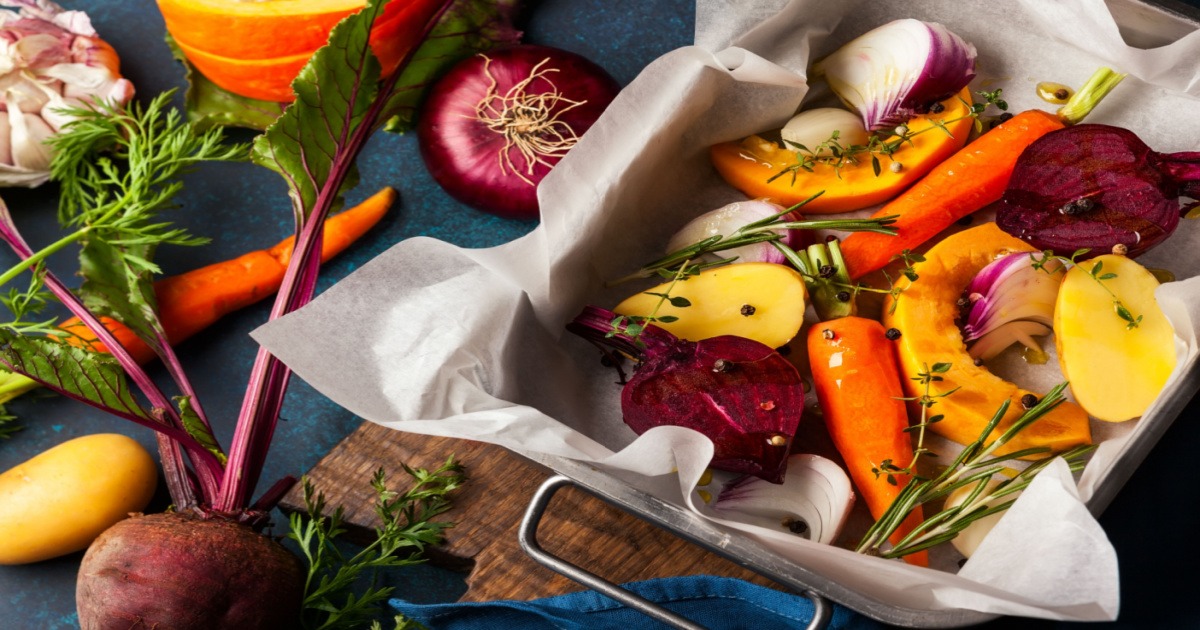Last updated on June 15th, 2023
It’s easy to overdo it on sweets and rich foods during the holidays. Between hearty proteins like turkey or ham and the array of treats around every corner, it’s hard to resist the temptation of eating everything in sight. Over half of surveyed Americans (more than 60%) report they think they “deserve” to indulge in holiday treats.
But while you and your residents don’t have to totally resist temptation, forgoing all healthy options probably isn’t the best idea.
In communal living spaces, especially senior living communities, incorporating nutritious foods into the menu is essential during the winter months to maintain some type of healthy nutritional balance. Getting creative about eating more fruits and vegetables is one way to do this. If your menu is lacking in this department, ask yourself – where’s the produce?
Why is eating fresh produce good?
Eating fruits and vegetables has apparent benefits like lowering blood pressure and blood sugar; reducing the risk of heart problems, cancer, digestive problems, stroke, and cognitive impairment; preventing severe forms of heart disease; accelerating weight loss. They are filled with dozens of vitamins like A, B, and E and essential nutrients like fiber. However, it does matter how they’re preserved.
While frozen and canned vegetables are, in some ways, equally as healthy as fresh produce, eating fresh is better. Freshly picked or harvested produce holds the most nutrients, decreasing the longer it goes without being consumed.
Local produce is also more likely to be grown without harmful chemicals or pesticides, eliminating exposure that could lead to long-term health problems. Lastly, purchasing from small farmers or business owners helps support your municipal economy. Eating local is also an excellent way for residents to network with people in the community, especially if they aren’t originally from there. This helps build connections and gives people a sense of belonging, which also benefits their mental health.
Another important note: avoid sticking to one type of vegetable to get the nutrients you need. According to researchers at the Harvard T.H. Chan School of Public health, consuming a variety of fruits and vegetables is the best recipe for a well-rounded diet.
What types of produce can you find during the winter?
Most people think winter is the most challenging time to find quality produce because cold or snowy weather doesn’t provide the proper environment for fruits and veggies to grow. However, that’s not always the case. Here’s a quick list of some of the in-season produce you can find readily available during the year’s colder months:
- Green vegetables like kale, brussels sprouts, collard greens, celery, leeks, and swiss chard
- Fruits like bananas, apples, grapefruits, kiwi, pears, pineapples, lemons, and limes
- Others vegetables like carrots, parsnips, potatoes, pumpkins, and winter squash
If you’ve connected with local farmers, talk to them to see some of their favorite ways to use the vegetables and fruits they produce. You could even bring them in as guest speakers for residents to meet and learn from.
How can I incorporate more produce into my dining program during the winter?
If you don’t already incorporate fresh produce into your dining program during the winter months, now is a better time than ever to start. Making a comprehensive meal plan involves more than switching up your side dishes. It means getting creative with the meals you serve.
Start with surveying your residents. Know their preferences and use that to guide what you serve. Here are some questions you could ask them:
- What are their favorite seasonal fruits and vegetables?
- Do they have a family recipe or tradition they usually make during the holidays?
- Are there any dishes from past years that they would like to have again?
One of the ways that people tend to lose track of their nutrition goals during the holidays is through snacking. However, readily available bagged chips or snack cakes aren’t always the best solution to satisfy residents’ cravings. Fresh produce can offer a healthy solution to snacking without sacrificing flavor or increasing prep time. For example, have your residents build a charcuterie board instead of having snacks high in sodium or fat. Incorporate foods like grapes, apple slices, and yams with protein-rich snacks like nuts to create a well-balanced blend of flavors. Bite-sized tomatoes add a festive flair to your board and are great to pair with mozzarella and other cheeses.
Don’t be afraid to go back to the basics, either. Soups and stews are a great way to incorporate fresh produce into a meal. These are often crowd-pleasing recipes, suitable for everyone — even picky eaters! Check out the U.S. Department of Agriculture’s list of winter recipes for more ideas.
Our Promise for the New Year
Our culinary promise to you goes beyond creating dining packages that residents love. Fresh food is at the center of our 2023 goals and is present in all of our plans. Next year we are taking what we already provide to the next level. We’re committing to creating meal plans that are at a minimum 50% fresh produce. Frozen vegetables or fruits are only purchased when needed and out of season, but that is rare.
When you partner with Culinary Services Group, you sign up for more than a partner. Our team of nutrition professionals is genuinely invested in helping you make your dining program one residents rave about. With healthy food prepared in-house by trained chefs, you can enter the new year ready to prepare your community for the next holiday. Contact us to learn more about how we can help your residential community, to keep up with the latest CSG updates, and to find out the exciting new offers we’re unveiling,








